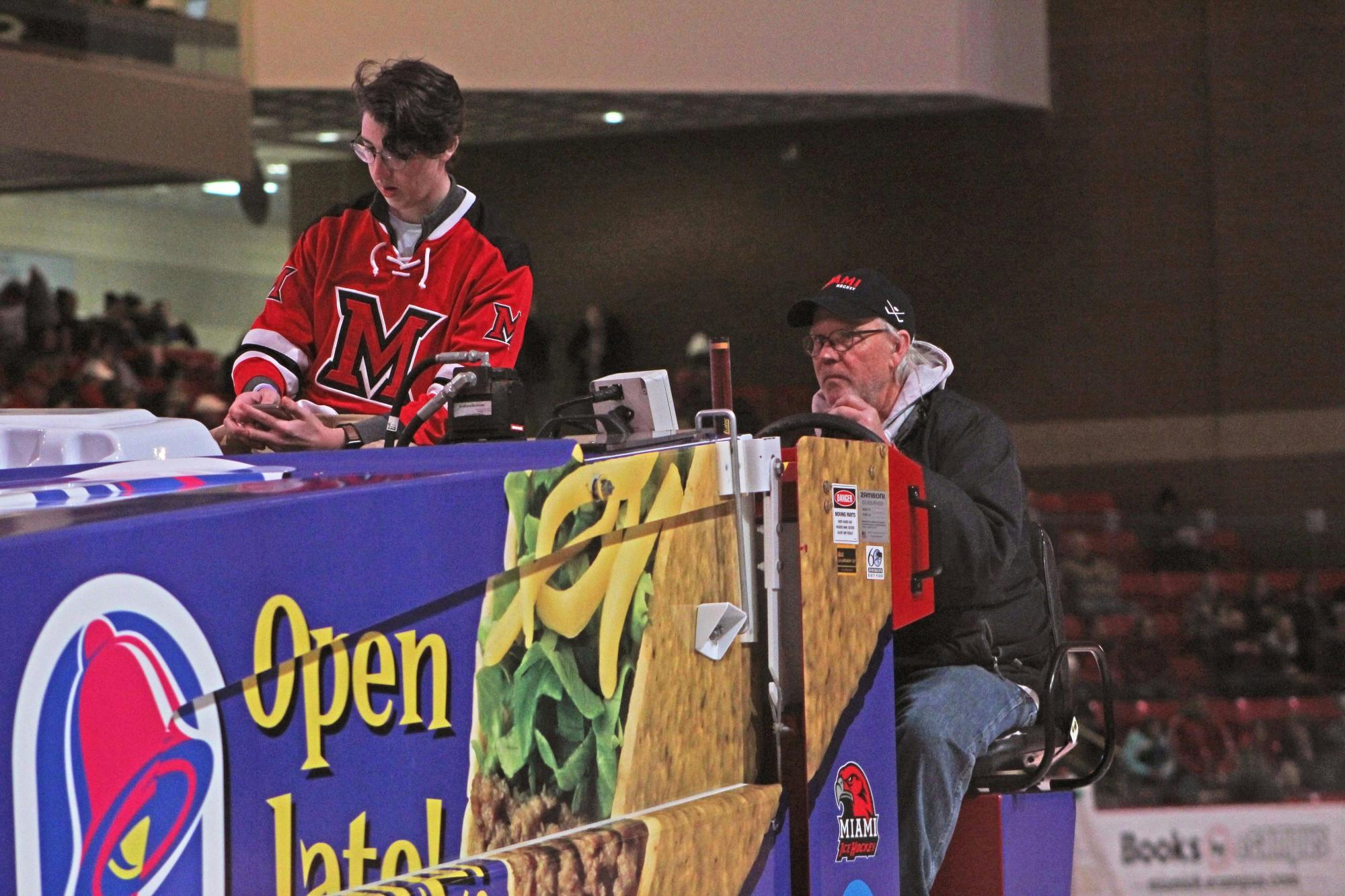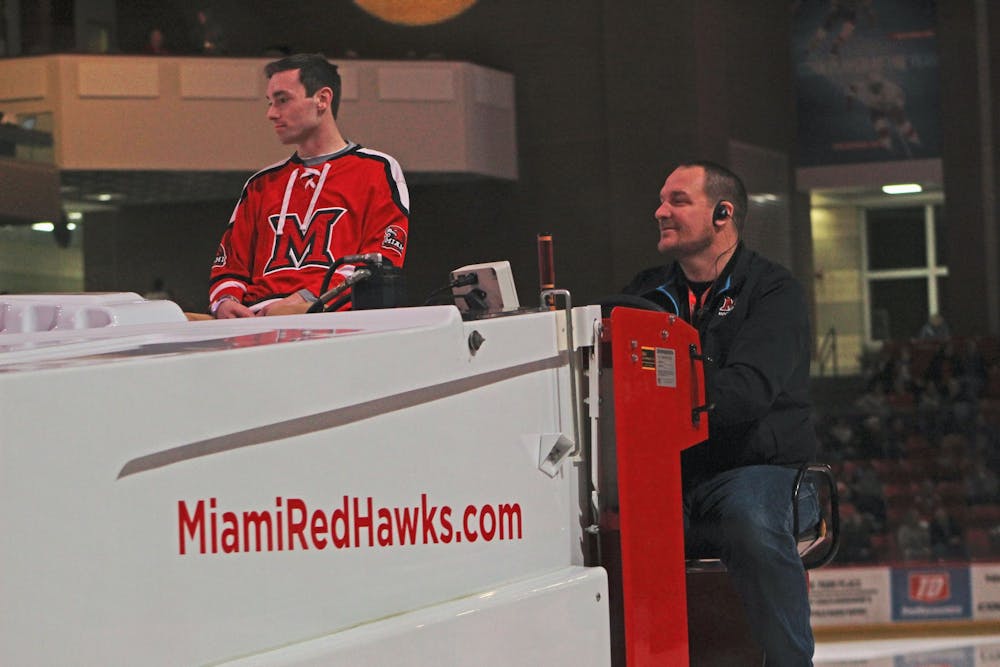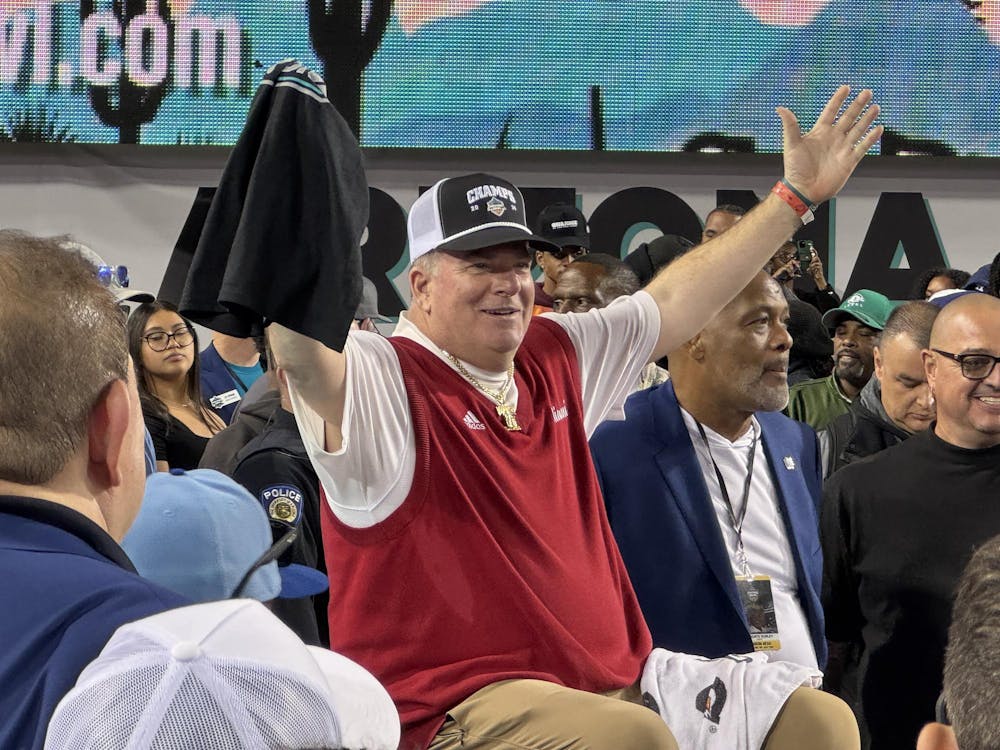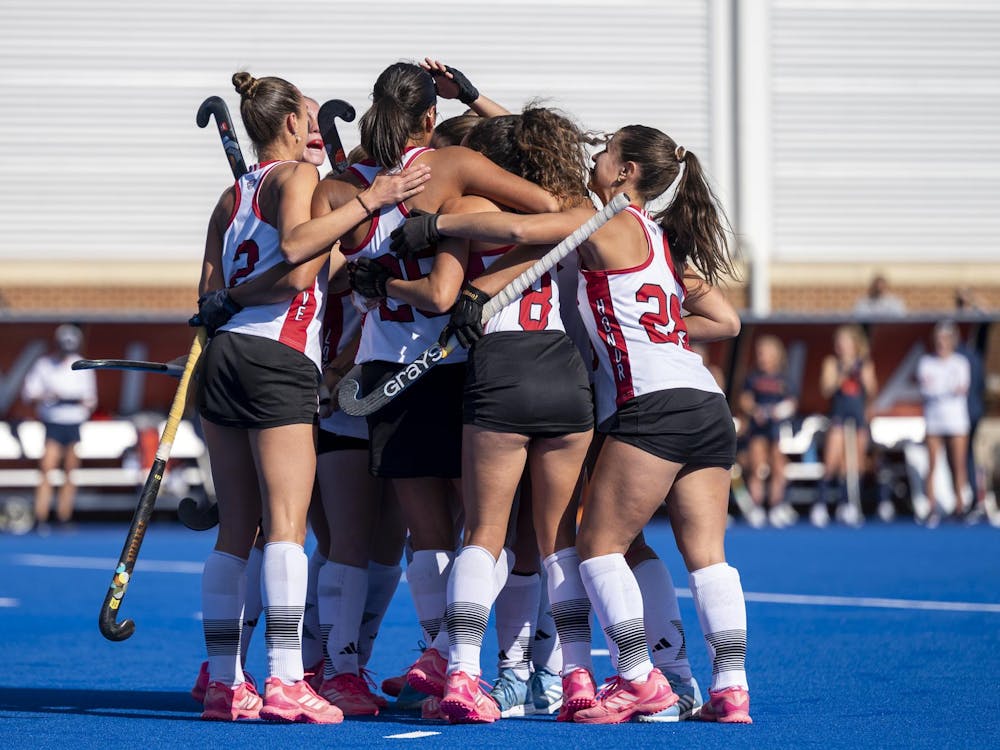Being an outsider to sports, I always latch onto the smallest details that manage to grab my interest and obsess over them.
In hockey, it’s the Zamboni.
It never fails to bring me joy anytime I oddly find myself in a rink. I was curious as to what a person has to learn in order to use an ice resurfacer — yes, that is the technical name. Zamboni is just the most popular brand — and what type of person takes on that kind of occupation. I found out everything and more when I sat down with two of the three full-time ice technicians at Goggin Ice Center.
Brandon Hall, 43, and Daryl Hildebrand, 60, are two of the certified ice technicians behind the Zamboni wheel, and neither of them had any experience with managing an ice rink before coming to Miami University.
“Until my son started playing hockey seven years ago,” Hall said, “I had never been in an ice rink.”
Hildebrand had a similar experience.
“I had never even heard of a Zamboni,” he said. “[My native Indiana is] mostly football and basketball.”

Daryl Hildebrand (right) drives a Zamboni around the Steve 'Coach' Cady Arena ice during a hockey game between the Miami RedHawks and the Western Michigan Broncos on Feb. 14.
However, they both had extensive maintenance experience.
Hildebrand hails from a small town 40 minutes away from Oxford in Indiana, and worked maintenance for 36 years at the Indiana Department of Natural Resources. Hall, a Cincinnati native, has done mechanical work since he graduated high school.
After they both were interviewed three times for the job, they were hired and sent to the North American Rink Conference and Expo to take classes like Basic Arena Refrigeration and Ice Painting and Making to gain their ice technician certificates. They have to renew their certifications every five years.
Even then, they both still felt like the only real way to learn arena management was by actually doing it.
Enjoy what you're reading?
Signup for our newsletter
“You do anything like we do over and over again,” Hildebrand said. “And you just start getting good at it.”
Hall said he had an interesting experience training to use the Zamboni. His trainer was a man who had been driving for over 15 years.
“I rode with him for the first day,” Hall said, “because I had never driven one before. The next day, he let me drive around a little bit on the ice. The third day, he called in sick. My boss walked me through the steps again, and before I could wrap my brain around it, he told me I was good to go.”
Hall is now a trainer for anyone new who steps up to drive the Zamboni.
“Driving it is easy,” Hall said. “But as soon as something goes wrong, people panic and everyone’s an expert Zamboni driver.”
The actual logistics of how exactly a Zamboni works are more complex than they seem. Hall compares the mechanism to that of a razor blade.
The underside of the ice resurfacer shaves a microscopic layer of ice off. Then, the wash water that comes out acts like the gel strip of a razor, helping to fill in the gouges made by the ice skates.
Hall does most of the maintenance on Miami’s Zambonis himself, including the required daily and monthly checks.
“We do a lot,” Hall said. “I have to change the blades every 120 cuts. If the cuts [on the ice] are harder, we change every 80 cuts.”
Whether it be changing the coolant or greasing the Zambonis, Hall ensures it is done.
He said there has been a learning curve though, as there are no ice resurfacer service centers nearby.
“Yeah, the closest one is in Michigan.” Hall said. “I’ll call up there for help when I need it.”
He and a man named Jeff have become quite good friends over the phone.
However, Hall and Hildebrand’s shifts at Goggin are not just made up of driving in circles on the ice.
“We sharpen customer skates,” Hall said, “and the synchronized skating team’s skates, whatever comes up. Sometimes I’ll be doing something, and in the middle of it, I’ll be called to cut and edge the ice.”
Their daily duties even extend past dealing with ice and skates.
“We do a lot of the building maintenance around here,” Hildebrand said. “We change lightbulbs, outlet switches, we deal with the toilets when they malfunction.”
Hall took me back to their massive workshop. There are so many machines to which you could potentially lose a finger. The ice plant, comprised of several large white tubes that act as a refrigeration system for the rinks, makes sounds similar to 100 jackhammers going at once. Hall and Hildebrand are unfazed, though.
On varsity game nights, it is common for them to be hard at work until 2 a.m. They prep the arena for the game and then have to shut everything down.
“If anyone could see how much work we do besides driving the Zamboni,” Hildebrand said. “No one would be jealous of our jobs.”




